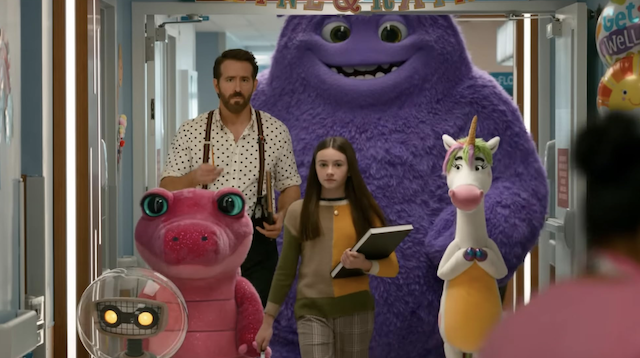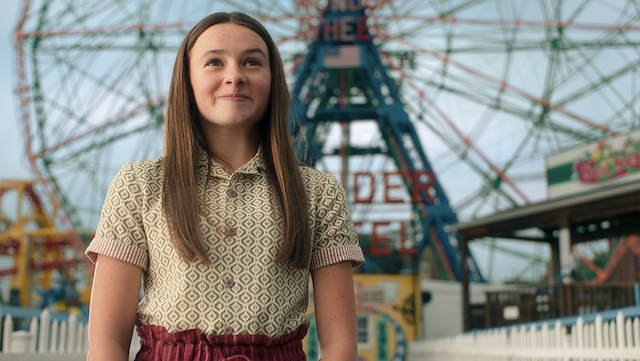
©Courtesy of Paramount Pictures
When I was growing up in Japan, I was a precocious kid who saw things in a a skeptical attitude. What kind of movie would a child especially one like myself want to see if it were made from an adult’s viewpoint? Parents are usually cautious about what films are age-appropriate for a kid to see at the theater or on TV. If this precocious kid doesn’t fit into a certain category that parents had imagined or could relate to, that kid could lead a very solitary life.
This was the type of kid that director John Krasinski had in mind when he took us on a deep dive into the mind of his protagonist, Bea (Cailey Fleming), who finds herself in the world of imaginary friends in IF, his latest film — a live-action animation hybrid. This young girl has to grow up fast after her mother’s death.
And since her father (John Krasinski) is in the hospital about to undergo heart surgery, her maturation process is about to speed up. So Bea finds herself living in her childhood home with her grandmother (Fiona Shaw). When Grandma brings out Bea’s art supplies, Bea quickly shuts her down, saying she’s not a child anymore and doesn’t do those things.
After visiting her father in the hospital on her way home, Bea witnesses a strange creature following her. The creature hides in the apartment upstairs to avoid being noticed. Upon knocking, Cal (Ryan Reynolds) greets her saying that she’s experiencing a hallucination. But soon, the truth eventually emerges. Cal has been residing in the home of two retired imaginary friends, Blossom (Phoebe Waller-Bridge) and Blue (Steve Carell). It seems that Cal has been attempting to find new children to adopt Blossom and Blue. So, Bea volunteers to find some new children who could adopt them.

©Courtesy of Paramount Pictures
During the process of finding the right children, we learn that these imaginary friends come in many forms; one is like a glass of water with a single ice cube and another is a giant bubble (Awkwafina). They are like certain characteristics which are different for various kids and adults.
Pixar and DreamWorks creators employ approaches that include bright eye-popping colors, silly jokes, and lovable characters which keep kids engaged; there’s also enough sly humor and heartwarming references to amuse adults as well. In this film, Bea doesn’t associate much with other students in her school, other than Benjamin (Alan Kim), a kid in the hospital.
The film drives viewers to look inward to their own childhoods and that may make it difficult to distinguish between adults and children. Fleming holds things together by acting older than she is, so it’s not hard to find her endearing due to her plight throughout the film.
Krasinski is aware that while we are all on a road to struggle through a certain period of one’s life, we still yearn for a bit of comfort. The film focuses on the intricate feelings of a child’s mind as well as how we need to uplift our spirits. It was clear that the film is intended to give people an escape from the traumas of the real world; it’s an authentic rendering of the places and people we turn to when reality frightens us.
For Reynolds and Shaw, expressing their characters wasn’t a small task; the diverse emotions that Shaw brought to life was truly admirable, and she employed nuances that many people fail to master even when they’re older. The British actor gets her own show-stopping moment by doing an interpretive dance performed to music from the movie “Spartacus,” of all things.
Krasinski certainly broke the mold in the way he shaped story-telling for younger audiences. While sending the sweet messages in IF— which are still very much appreciated by kids –the film possibly is more meaningful to adults than to children especially when one thinks about how much artists and writers have thousands of invisible friends in their heads who demand that their stories to be told.

©Courtesy of Paramount Pictures
If you like the article, share your thoughts below!
Check out more of Nobuhiro’s articles.
Here’s the trailer of the film.

